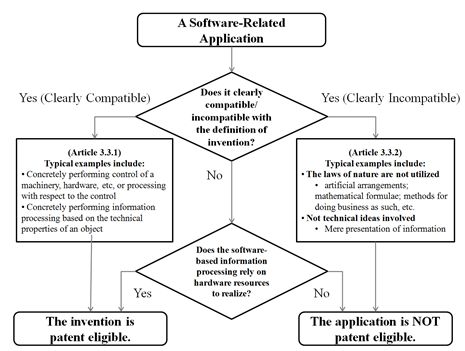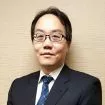On June 9, 2021, the Taiwan Intellectual Property Office (TIPO) announced that the amendments to the "Examination Guidelines on Computer Software-Related Inventions" were finalized after a public hearing and shall come into effect on July 1, 2021. The Guidelines, arguably the most difficult part of the "Patent Examination Guidelines," were last updated seven years ago and in the most dire need for change not least because of emerging technologies such as Artificial Intelligence (AI), Big Data, and Blockchain that have flourished in these seven years.
The gist of the revised Guidelines is as follows.
- Patent Eligibility of Software-Related Inventions
The pre-amended Guidelines contained ambiguity when it comes to determining eligibility of software-related inventions. As a result, the examination was inconsistent and oftentimes overly rigid in practice. Specifically, how and whether the old Guidelines' definition of software-related inventions fits in the general definition of inventions set forth in the Patent Act (Article 21) was unclear. To improve consistency and predictability, the revised Guidelines recalibrate the process of examination of eligibility, making it clearer and easier to operate, as shown in the following flowchart.

Fig. 1 Decision Flowchart of Eligibility of Software-Related Inventions
As seen above, to determine whether a claimed software-related invention is patent eligible, the first step is to determine whether the invention is clearly compatible or incompatible with the general definition of invention provided in the Patent Act. To make the test even easier to operate, the new Guidelines provide typical scenarios of compatible and incompatible applications. Example scenarios of applications clearly compatible with the definition of invention include applications "concretely performing control of a machinery/hardware, or processing with respect to the control" and those "concretely performing information processing based on the technical properties of an object." The opposite scenarios include claimed inventions that "merely utilize artificial arrangements, mathematical formulae, pure business methods, and any other non-nature laws" and those where no technical ideas are involved.
If the subject matter of a software-related invention application is neither clearly compatible nor clearly incompatible with the definition of invention and calls for an interpretation, then the second step of the test comes into play. In this phase, the examiner determines whether the information processing of the software is realized by hardware resources. If the answer is affirmative, the application is an eligible invention, otherwise it is not. Generally speaking, the eligibility requirement is met if the claimed software-related invention teaches a specific apparatus/means of information processing which is realized through a collaboration of software and hardware resources.
- Clarification of Inventive Step (Non-obviousness) Examination
The assessment of inventive step (non-obviousness) may be considered the core of patentability examination. With the goal of aligning with the general Guidelines in this aspect which have been revised in July 2018, the revised Guidelines on software-related inventions are updated on topics including "a person of ordinary skill in the art," "steps for determining inventive step," "factors negating inventive step," and "factors affirming inventive step."
Moreover, to account for the unique properties of software-related inventions, the revised Guidelines augment the test of "simple alteration" as a factor to negate inventive step by introducing three more types of examples to this factor. The new trio includes:
- reimplementation of common general knowledge at the time of filing in a computer-generated virtual space;
- application or modification of common general knowledge at the time of filing; and
- features that do not contribute to technical effects.
The old examples long existing in the Guidelines remain unchanged after the amendment; they are:
- application of a technology in a different technical field;
- systematization of human operations; and
- using a software to perform a function of performed by prior art hardware technology.
- Examination Case Studies of Emerging Technologies
The pre-amended Guidelines lacked exemplary cases of AI-related inventions. To address this deficiency, the revised Guidelines provide multiple related cases, covering a wide array of topics including the definition of invention, the requirements of sufficient disclosure and enablement, the examination of inventive step. Also provided are cases on inventions related to internet of things (IoT) as well as ineligible inventions based on artificial arrangements, mathematical methods, pure business methods, etc. Readers interested in developing and patenting emerging technologies will receive beneficial guidance from reading these case studies.
- New Subject Matter
The pre-amended Guidelines already considered "device or system claims," "machine-readable medium claims," and "computer software claims (categorized as product claims)" as eligible claims for a software invention. The revised Guidelines complement the list with "data structure claims" which are categorized as product claims. As a result, the claims of software-related inventions are now classified under four types of non-method claims (or product claim) in addition to method claims.
The pre-amended Guidelines required that, in a product claim, especially in a "device or system claim" of a software-related invention, the claim limitations should delineate the relationship among each claimed hardware component and specify those hardware components that perform the functions of the software. This requirement was meant for the ease of identifying the technical features of the claimed invention. However, just as a footnote in section 2.2.1.2 "Non-Method Claims" of the pre-amended Guidelines pointed out: when the core function of an invention lies in software rather than hardware, product claims are usually drafted through describing the functions of the software modules rather than the hardware components or their relationship with the software elements. As a result, the revised Guidelines repeal the restriction. Henceforth software-related invention claims, even in the case of product claims, can be drafted via describing the functions to be achieved, without the need to have each feature attach to a structure limitation
The updates on product claims or non-method claims provide applicants with additional tools in patent drafting and, with the easing of restrictions, better showcase the features and functions of their inventions. The revision also allow the examination procedure to better reflect how software inventions are normally considered.
- Sufficient Disclosure and Clarity Requirements for Patent Drafting
Section 2.2 of the revised Guidelines defines the examination standards for "indefiniteness" and "sufficient disclosure"; the revisions provide criteria for questions unique to software inventions while conforming with the general Guidelines. In particular, the revised Guidelines list six typical scenarios of indefiniteness. They are:
- unclarity on the actor performing the steps or functions (e.g. whether the actor is a human, a machine or software is unclear);
- unclarity on technical features of the invention (e.g. an application that fails to delineate the relation among each limitation);
- ambiguity resulting from the claim language (e.g. using subjective terms like "aesthetically pleasing" or using relative terms like "high speed" without quantitative explanation);
- ambiguity in identifying the type of claim (i.e. whether it is a method or a non-method claim is unclear);
- ambiguity due to improper means/step-plus-function language; and
- lack of teaching of essential technical features.
For each scenario, the revised Guidelines provide case studies and detailed explanations as support.
How should applicants determine whether the disclosure of their patent specification has provided sufficient support to a software-related claim that is defined based on merely the functions of the software? The revised Guidelines remind applicants that such a claim could be considered insufficiently supported if the patent as a whole does not teach a person having ordinary skill in the art that the claimed functions can be achieved with other means not described in the specification, even though these functions can indeed be implemented with the means disclosed in the specification. Per our experiences, when this issue arises, applicants may consider two solutions. First, they may modify and limit the scope of the claims to the specific embodiments described by the patent specification. Alternatively, they may consider filing a rebuttal response by providing experiment results and analyses demonstrating that the claimed patent scope is reasonably predictable or deducible from the disclosure of the specification.
Another point worth noting is that the revised Guidelines bring about a clearer burden of proof test regarding means/step-plus-function claims. Under Section 2.3 of the revised Guidelines, examiners are allowed to initially construe a claim defined solely through function language as "including any or all devices/steps able to achieve or realize the claimed function," for the purpose of an efficient prior art search. To overturn this presumption, applicants are allowed to construe the claim of concern as a means/step-plus-function claim after delineating the coverage of the claim—the corresponding structures, materials and acts described in the specification and equivalents thereof. Of course, if applicants alternatively accept the examiner's claim construction, they may overcome an unfavorable search report by submitting evidence showing that the claimed invention is substantially distinguishable from the prior art.
The content of this article is intended to provide a general guide to the subject matter. Specialist advice should be sought about your specific circumstances.
